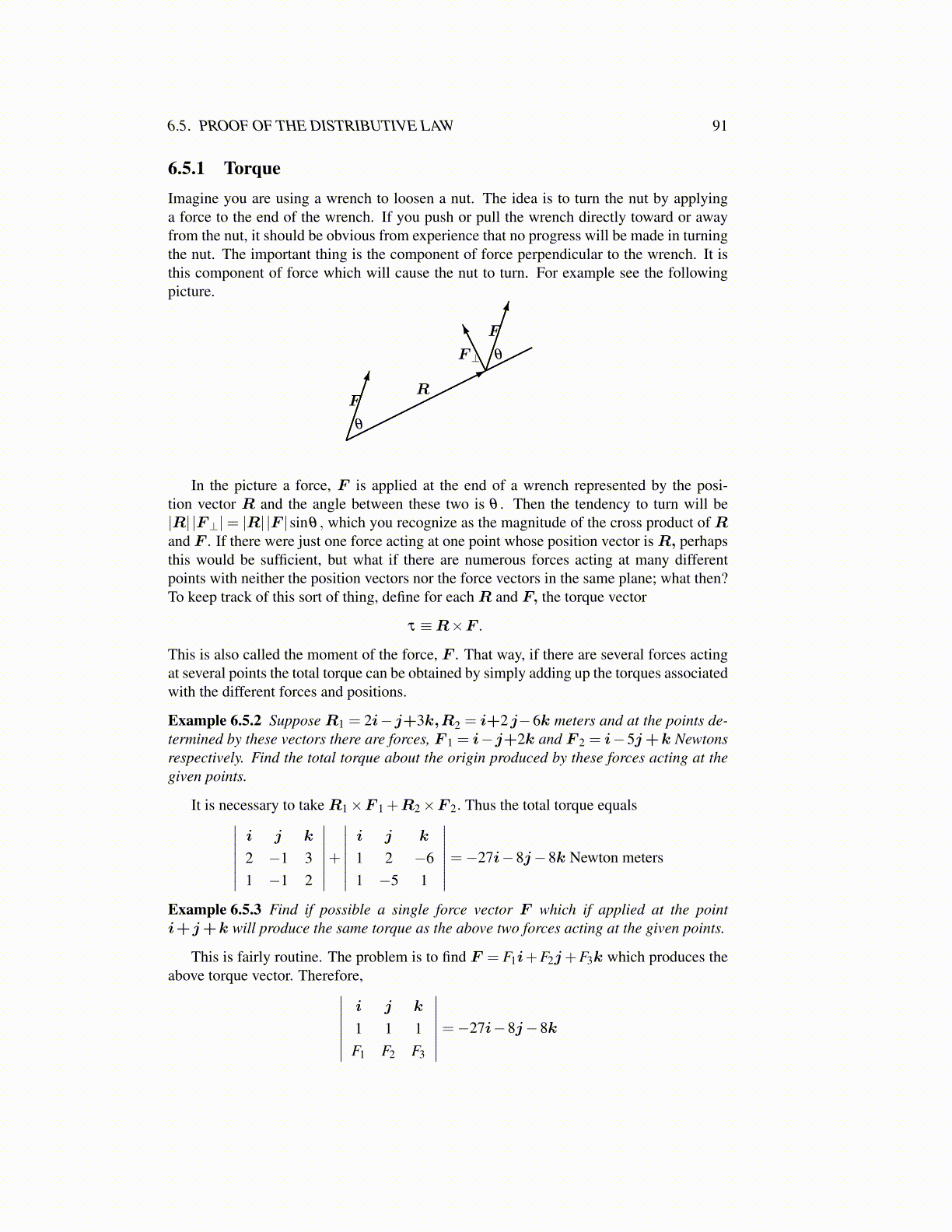
6.5. PROOF OF THE DISTRIBUTIVE LAW 91
6.5.1 TorqueImagine you are using a wrench to loosen a nut. The idea is to turn the nut by applyinga force to the end of the wrench. If you push or pull the wrench directly toward or awayfrom the nut, it should be obvious from experience that no progress will be made in turningthe nut. The important thing is the component of force perpendicular to the wrench. It isthis component of force which will cause the nut to turn. For example see the followingpicture.
F
F
R
F⊥ θ
θ
In the picture a force, F is applied at the end of a wrench represented by the posi-tion vector R and the angle between these two is θ . Then the tendency to turn will be|R| |F⊥|= |R| |F |sinθ , which you recognize as the magnitude of the cross product of Rand F . If there were just one force acting at one point whose position vector is R, perhapsthis would be sufficient, but what if there are numerous forces acting at many differentpoints with neither the position vectors nor the force vectors in the same plane; what then?To keep track of this sort of thing, define for each R and F, the torque vector
τ ≡R×F .
This is also called the moment of the force, F . That way, if there are several forces actingat several points the total torque can be obtained by simply adding up the torques associatedwith the different forces and positions.
Example 6.5.2 Suppose R1 = 2i− j+3k,R2 = i+2 j−6k meters and at the points de-termined by these vectors there are forces, F 1 = i−j+2k and F 2 = i−5j+k Newtonsrespectively. Find the total torque about the origin produced by these forces acting at thegiven points.
It is necessary to take R1×F 1 +R2×F 2. Thus the total torque equals∣∣∣∣∣∣∣i j k
2 −1 31 −1 2
∣∣∣∣∣∣∣+∣∣∣∣∣∣∣i j k
1 2 −61 −5 1
∣∣∣∣∣∣∣=−27i−8j−8k Newton meters
Example 6.5.3 Find if possible a single force vector F which if applied at the pointi+j+k will produce the same torque as the above two forces acting at the given points.
This is fairly routine. The problem is to find F = F1i+F2j+F3k which produces theabove torque vector. Therefore,∣∣∣∣∣∣∣
i j k
1 1 1F1 F2 F3
∣∣∣∣∣∣∣=−27i−8j−8k